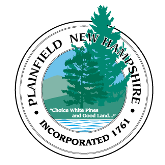Conservation Easements
Definition
A landowner can negotiate a voluntary agreement with a land trust to conserve, in perpetuity, the landowner’s property in its current use. The agreement is a legal document developed by the landowner and the land trust in conjunction with (if desired) legal counsel. A conservation easement assures landowners that the natural resource value(s) of their land will be protected forever.
The conservation easement is a deed that specifies the types and locations of activities permitted on the designated parcel of land. All future owners of the parcel are bound to the terms of the conservation easement. Land subject to a conservation easement remains in private ownership and can be sold, given or inherited at any time.
Financial Implications
Easements are usually donated to a land trust, and easement donors may realize income tax, estate tax and gift tax benefits. If the landowner pursues tax benefits, certain costs to the landowner are required: e.g., appraisal of the property, title search, boundary demarcation, creation of Baseline Documentation Report (BDR) by the land trust, etc. These costs can be covered/shared by grant monies from outside sources which the land trust will pursue for the landowner if requested.
Landowner/Land Trust Partnership
Upon signing the conservation easement document, the land trust will “own” the development rights to the property. This means that the land being conserved can never be broken into smaller parcels for development (smaller parcels each under individual ownership) purposes. However, small tracts of land (possibly two acres) can be excluded from the agreement and designated as future home sites during the development of the legal agreement. The landowner continues to enjoy and use the property as before the agreement only now the property cannot be manipulated into smaller parcels.
The land trust will steward the parcel of land by periodically visiting the property. This monitoring insures that the stipulations written in the easement are being met. If this is not the case, the land trust will notify the landowner of the “infraction” and attempt a resolution with the landowner before legal involvement becomes necessary. If the property changes ownership the land trust will offer to educate the new owner about the conservation easement.
Terms Used
- Land Trust
- A land trust is an organization (most often a non-profit organization) that permanently protects specific parcels of land using voluntary, legally binding agreements. The land trust’s protection is most often the conservation of the land in its current form of ownership and management.
- Current Use
- Conserving a parcel of land “in its current use” means that if, at the time of the signing of a conservation easement, the property (usually one homestead with fields and/or forest) will be conserved as it is currently being used (e.g., managed forest, hay fields, historic site, horse farm, dairy farm, orchard, etc.). Current use through the State of New Hampshire or Vermont is NOT in perpetuity. The current use entered into with a state can be “broken” with a monetary penalty made to the state. For example, a landowner wishing to take his/her land out of the state’s current use program will possibly pay 10% of the last three years taxes avoided by participating in the state’s current use program.
- Exceptions Within the Agreement
- During the negotiations that occur prior to the signing of the conservation easement document, a landowner and the land trust agent can determine if a small amount of acreage can be “carved out” for a future building site; or looking to future alternative energy possibilities a site can be reserved for a wind turbine or solar panels; if there are trails on the property those trails can be designated as private, open to the public or open to the neighborhood; etc.
- Stewardship by the Land Trust
- The conserved parcel will be monitored periodically by the land trust for adherence to the terms of the conservation easement. The monitor can use written records, photographs and other technologies to verify compliance. This stewardship is continued in perpetuity.
- Development Rights
- Any landowner can at any time divide their land into smaller parcels for the purpose of selling the smaller parcels to another landowner. For many reasons, it is advantageous to preserve a community’s open space. A land trust agrees to own the development rights of a landowner’s land so that that large open space remains intact. Hence, the land cannot be split into smaller parcels for the building of one or more houses, businesses, parking lots, etc.
- Open Space
- Open space can be one to any number of acres in size. Open space is desirable to many communities because it preserves vistas, sense of place, cultural heritage, historic sites, farms, recreational resources, forest and water resources, wildlife habitat, etc.
- Public Access
- A conservation easement does not allow access to the public unless the landowner specifically provides for it in the easement document. Public access is more often granted when the property has a history of public use and is perceived to be a recreational resource. Some landowners provide public access rights to a limited area, such as hiking along a defined corridor. Landowners may limit access to specific purposes (education or hunting) or permit only certain type of activities such as hiking or skiing. Vermont and New Hampshire laws protect landowners who offer public access from liability.
